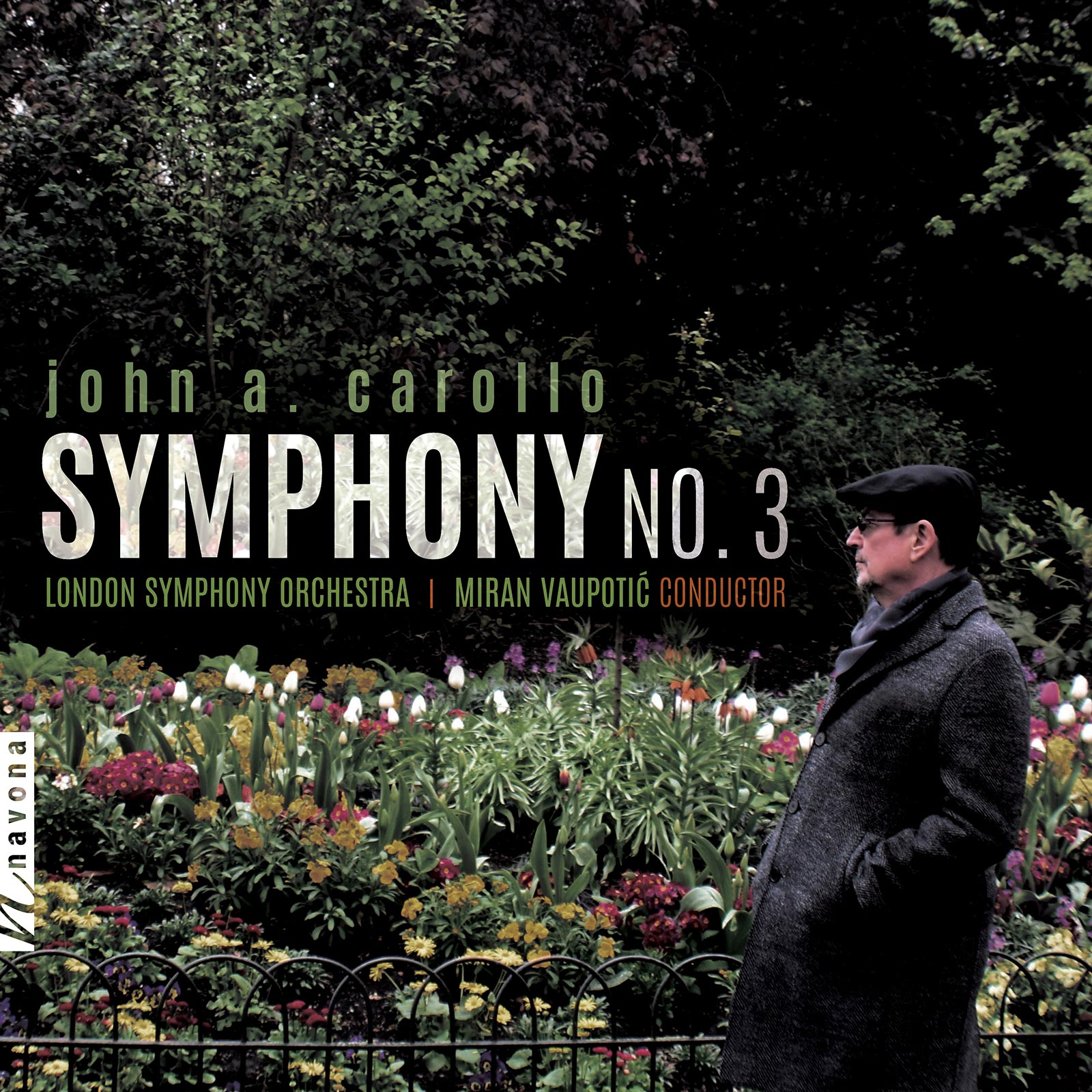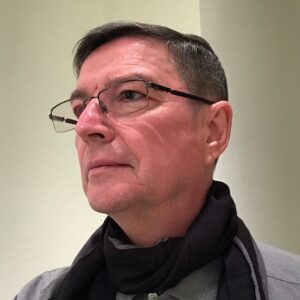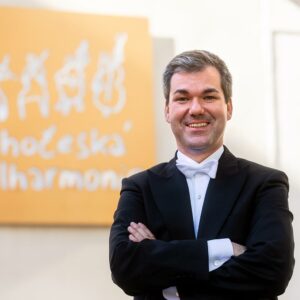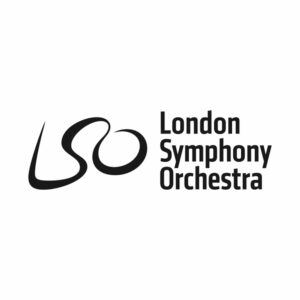
Share Album:
Symphony No. 3
John A. Carollo composer
London Symphony Orchestra | Miran Vaupotić conductor
Quite surprisingly, Symphony No. 3 had humble beginnings. Back in the late 2000s, composer John A. Carollo connected on MySpace (!) with English soprano Sharon Selman, who was deeply involved in the preservation of trees and forests. She suggested that Carollo use the poetry of William Blake as a starting point to create a piece about nature. Carollo didn't think twice; and a song cycle named Awake Humanity to Nature’s Beauty! was composed, then reworked, resulting in two different instrumentations.
Fast forward a decade to the year 2017, and Carollo, then living on the Big Island of Hawaii, found himself transcribing the song cycle and fashioning it into a symphony, which became the telling of a love story. The composer attributes the lyrical nature of the resulting work to the beauty of the Hawaiian scenery.
Perhaps the most striking feature of this symphony is found in the occasional appearance of a wordless soprano, which is used to accentuate certain key phrases. Contrary to the tradition of classical composition, Carollo chooses not to have the vocalist take center stage, and instead treats the voice as simply another instrument in the orchestra. The results are often surprising; Richard Strauss, who considered the human voice the most important instrument of all ("...but also the most difficult to play"), would certainly have approved, not just of the technique, but also of its execution.
Symphony No. 3 is another large-scale addition to John A. Carollo's catalog, and no doubt one that will find many ardent admirers, both in his long-standing audience as well as those yet unfamiliar with his works.
Listen
Stream/Buy
Choose your platform
"Jam-packed with themes and colourful ideas"
An Inside Look
John Carollo - Symphony No. 3
Track Listing & Credits
| # | Title | Composer | Performer | |
|---|---|---|---|---|
| 01 | Symphony No. 3: I. To Morning | John A. Carollo | London Symphony Orchestra | Miran Vaupotić, conductor | 6:07 |
| 02 | Symphony No. 3: II. Gestural Rituals | John A. Carollo | London Symphony Orchestra | Miran Vaupotić, conductor | 7:06 |
| 03 | Symphony No. 3: III. In the Garden of Earthly Delights | John A. Carollo | London Symphony Orchestra | Miran Vaupotić, conductor; Emma Tring, soprano | 8:01 |
| 04 | Symphony No. 3: IV. Let the Evening Stillness Arouse | John A. Carollo | London Symphony Orchestra | Miran Vaupotić, conductor | 6:41 |
Recorded April 7, 2019 at Air Studios, Lyndhurst Hall in London, United Kingdom
Recording Session Producer Brad Michel
Co-Producer Bob Lord
Recording Session Engineer Brad Michel & Chris Barrett
Assistant Engineer Gianluca Massimo
Concertmaster Tomo Keller
Executive Producer Bob Lord
Executive A&R Sam Renshaw
A&R Director Brandon MacNeil
A&R Chris Robinson
VP, Audio Production Jeff LeRoy
Recording Sessions Manager Levi Brown
Recording Sessions Assistant Emma Terrell
Audio Director Lucas Paquette
Editing, Mixing, & Mastering Brad Michel
VP, Design & Marketing Brett Picknell
Art Director Ryan Harrison
Videographer Ty Ueda
Design Edward A. Fleming
Publicity Patrick Niland, Sara Warner
Artist Information

John A. Carollo
John A. Carollo was born in Torino, Italy and brought to the United States by his adoptive parents. When he was in grade school, he studied classical piano and sang in the church choir. While attending college in San Diego CA, he studied music and psychology. During this time, Carollo took piano lessons and began composing his first piano works. He graduated from San Diego State University being granted a master’s degree in clinical psychology.

Miran Vaupotić
Acclaimed as “dynamic and knowledgeable” by the Buenos Aires Herald, Croatian conductor Miran Vaupotić has worked with eminent orchestras including the London Symphony Orchestra, the Royal Scottish National Orchestra, the Berliner Symphoniker, the Russian National Orchestra, the Slovak Radio Symphony Orchestra, the Prague Radio Symphony Orchestra, the Budapest Symphony Orchestra MÁV, Orchestre de Chambre de Genève, the Cairo Symphony Orchestra, Orquesta Sinfónica Nacional Argentina, and others, performing in major halls around the globe such as Carnegie Hall, Wiener Musikverein, Berliner Philharmonie, Rudolfinum, Smetana Hall, Victoria Hall, Forbidden City Concert Hall, Shanghai Oriental Art Center, Dubai Opera, Tchaikovsky Hall, International House of Music, CBC Glenn Gould Studio, and more.

London Symphony Orchestra
Widely acclaimed by audiences and critics alike, The London Symphony Orchestra was named by Gramophone as one of the top five orchestras in the world. A world-leader in recording music for film, television, and events, it was the official orchestra of the London 2012 Olympic and Paralympic Games ceremonies, memorably performing Chariots of Fire on stage in the opening ceremony, conducted by Simon Rattle and with Rowan Atkinson.
Notes
It is fitting that the London Symphony Orchestra was the first orchestra in the world to record my Symphony No. 3. It had its beginnings as a song cycle entitled Awake Humanity to Nature’s Beauty! I took the poetry of William Blake and set it to music. Blake infuses nature into much of his poetry and he has the distinction of being the father of the Romantic Period in art.
There are two versions of the Blake Song Cycle, the first for Soprano, Guitar, Cello, and Piano (2007), and the later for Soprano, Violin, Cello, and Piano (2011). I transcribed the second version for orchestra in 2017 while living on the Big Island of Hawaii, which contributed to the lyrical nature of Symphony No. 3. The second version was premiered in Honolulu at the Public Radio Station and recorded soon thereafter.
The music had its genesis when MySpace was popular and artists had web pages extolling their art. Several musicians, including the great guitarist Christian Saggese, had heard my music and wanted me to compose music for them. A soprano from London, Sharon Selman, wanted me to write her a song cycle about nature and suggested Blake as a source. She had mentioned that Blake had written fine “nature poems” with direct environmental expositions.
Beginning with an ode to morning, the music transverses the romantic side of human nature until we reach the evening stillness, which often arouses human appetites. Within our daily dialogue, gestures express ideas or meaning in ways that words cannot convey, where body movements speak louder than utterances. Our gestures can be intensely energetic, filled with vibrato and fire, or calm and deliberate with much playfulness and merriment as we live our daily drama of life. It’s within this garden of earthly delights that our cravings, quests, and seductions, where a person whose affection or favor has been won, take on significance and form. The third movement conveys a romantic adventure, while the fourth satisfies the yearning for human bonding as we indulge in our romantic affairs.
The first and fourth movements were transcriptions from the Song Cycle that contained Blake’s poems To Morning and Love and Harmony. Movements Two and Three were mostly transcriptions from the instrumental pieces within the Song Cycle (Awake Humanity to Nature’s Beauty! and the Prologue). Snippets from another song in the Cycle were added to the third movement as well as a section of new music to enhance its character and development. Adding a soprano voice came to me while the music was being composed and it seemed a natural fit in the section where the romantic adventure was in full swing!
— John A. Carollo
